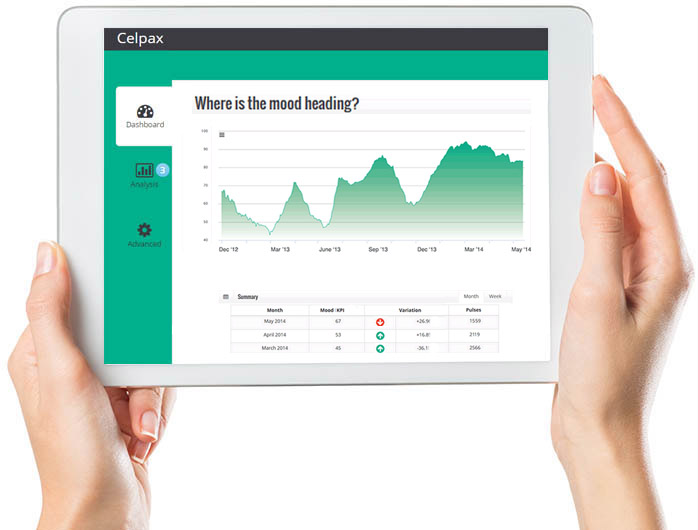How to Improve Employee Morale in Restaurants Using Data
There are a number of reasons why an employee leaves their employer. No matter what the industry, an increase in pay elsewhere can be incentive enough for an employee to jump ship. Likewise, a title bump can be an attractive offer for an employee.
When it comes to foodservice though, the industry is tasked with dealing with even more issues and variables when it comes to employee retention.
For some, restaurant jobs are seen as ‘gigs’, not careers and therefore attract more transient, temporary workers. This means that oftentimes, restaurants are left in the lurch with a shortage of staff (this can be especially challenging depending on the season). Additionally, the long hours inherent to the business aren’t for everyone, and certainly, the work can be hard on an employee’s body.
Many of these are factors that a restaurant owner can’t control, however, there are internal factors that food and beverage operators can control which can help retain your employees.
While you may not be able to provide a title bump to every line cook, you can make small and large adjustments that create a better work environment.
By measuring and monitoring employee happiness, restaurants and foodservice businesses can make changes based on instant employee feedback and then quickly adapt to encourage and increase retention.
Why does employee retention matter?
There’s a cost associated with high turnover that isn’t always obvious. When an employee leaves, you spend money, time, and effort advertising to find a replacement. This is in addition to the time spent on interviewing, various HR tasks, and then training the new hire.
And it’s not just that – while you’re waiting to fill the vacancy, the actual job still needs to get done right?
That means getting your existing employees to work longer hours to cover for the vacancy. Eventually, this can lead to lower efficiency and can add to employees’ stress levels and exhaustion. Alternatively, hiring temp workers, often who may not have proper training, means your restaurant’s service quality often suffers, this can translate into glooming Yelp reviews.
What you can measure, you can manage
The foodservice industry moves fast. There isn’t always time to sit down and fill out a survey or even have an in-depth one-on-one talk with an employee.
So how can you know to gain an understanding of how your employees feel today?
With little resources and little time, pulse surveys and feedback kiosks are growing in popularity.
A pulse survey like Celpax asks employees to rate each workday or shift with a simple decision – was it a green smiley face day? Or a red sad face day?
A bonus to using a device like Celpax is that it requires only a Wi-Fi connection to record the results in your business dashboard. Employees don’t need a laptop or even a mobile device to participate and give their opinion.
When you measure and take stock of employee happiness, you’re able to track the general mood in the workplace and instill changes or programs in an effort to raise employee morale. After implemented those adjustments, you can visually see through the employer dashboard what the results of your efforts are!

How a baseline measurement can improve performance and morale
After beginning to measure your employee happiness, we suggest garnering a baseline of how your employees feel at work. For example, on average, 70 per cent of employees press the green button on a normal day.
This means you can quickly see the impact when you get a daily score that differs from your baseline. When you notice a dip in employee mood, try to correlate the negative feedback with what’s happening in the workplace.
Got 40% green yesterday when your sous chef called in sick, leaving the kitchen boiling with stress and bad vibes?
Or was it the first day with the new shift scheduling system (which they perhaps didn’t get enough training for)? Is staff morale up since the new management took over last month? And how is the morning shift responding to the new shift manager, who took over from an unpopular coworker?
If you aren’t aware and not catching issues in your operation early enough, the impact on your employee health and general work atmosphere can be detrimental. Remember that small issues can snowball to become big problems.
What makes a ‘red day’ for employees
It’s common to see differences in mood depending on which day of the week it is. A stressful Saturday when the restaurant is filled to the brim is different from a calm Tuesday morning.
Yet some restaurants are surprised to see that the reality of the results aren’t what they expected. Many times it comes down to who the shift manager is, and companies see a high number of green feedback even on a busy Saturday.
“Red” feedback tends to include unpredictable shift schedules, last-minute changes to shifts, tables splitting the bill in more than there are people eating, negative workplace relationships, or unsafe work environments.
And when wages are paid late, for whatever reason, that tends to show up in the data as red spikes, highlighting the need to respect the basics of all contractual work – pay employees on time.

Ways to easily improve employee morale and increase retention
Here are ideas and programs that Celpax community members have implemented and found helpful when looking to increase employee happiness and retention:
- Honesty & Flexibility: Give employees not only a voice when it comes to scheduling shifts, no one likes being blindsided – give them proper notice when there are shift changes
- Social Events: Organizing social events to create a “we” feeling among your teams
- Break the Silos: If your business has multiple departments or levels within the structure, oftentimes we see that employees in one area have no clue about the going-on in a different area. Allowing a day for ‘job shadowing’ can create a more transparent and cohesive work environment. For example, have your marketing department spend the day in the kitchen to gain a better understanding of the struggles the line cooks may face
- Customer Feedback: Listen, collect and learn from feedback from customers. Read out the good stuff in front of your team to celebrate and discuss improvements
- Transparency: Zingerman’s, a gourmet food business in the U.S., shares sales, costs, revenue, and customer satisfaction from the previous week. Start moving from “keep it a secret” to a mindset of “ask me anything” and get employees involved at a deeper level
- Training: Get employees to attend training sessions and industry events of their choice, to stay on top of the trade. Alternatively, implement a mentorship program in your business to allow for personal and professional growth
- Get Visual: Show goals, activities and team progress on boards
- Caring & Sharing: There is a difference between a leader who asks employees to “leave their problems at the door as they enter work”, and someone who “employs the whole person”. Good leaders provide a calm, communicative, and supportive work atmosphere
- Small Fixes Add Up: The cash registry has a faulty power supply so it frequently turns itself off, the fridge handle broke 2 months ago… These things might look like small details, but when an employee struggles to open that fridge 20 times in a day, it stops being a small thing
- Don’t Underestimate the Simple Stuff: Sometimes, the simplest acts of kindness in the workplace can mean the world to an employee. Understanding that a waitress needs a quick breather after a particularly tough customer, bringing in coffee and donuts for the team, or a simple ‘thanks, good job today’ can be a huge boost for employees

Putting data in action
Pre-meal or pre-shift meetings are a popular way to regularly talk about how people felt at work yesterday.
It sounds overly simple but an employee who feels free and safe enough to say: “Hey boss, we had two new people starting without training on a Saturday night again, it was a mess…” is a starting point for change.
When leaders are transparent with the collected data, it lays the basis for meaningful conversations. Many Celpax users choose to show the dashboard results to all employees in meetings or choose to share the negative day results with employees to start the conversation.
With a neutral number to refer to, it makes it easier for people to speak up, i.e. “we got 30% green on Saturday, please schedule new staff do their training on shifts that are calmer”.
Open up the floor to employees to see how you can help them in return. Are there any roadblocks in their way? (“The reach-in cooler is still broken, it’s been a week and it’s super annoying”) and make your employees feel involved, informed and prepared for the workday. Glue the team together!
Correlate employee morale with your KPIs
Celpax member Dallant (a food manufacturer in the U.S. points out the value of measuring employee mood when it comes to tangible KPIs: “You can correlate the daily Employee Mood with any key number like orders, sales… This way you can monetize each point employee morale goes up or down.”
Dallant expands on the point by saying, “We measured how much our employee engagement dropped when we introduced new software, as it affected the way people report their flexible work schedule. The rollout clearly created unnecessary stress, as shown in the employee morale data!”

The road to a happier workplace
As issues and trends are identified, leaders can plan actions to make sure you maintain (and increase!) employee morale, using the baseline from the daily employee morale data.
With the analytics at hand, you can make business decisions or course corrections quickly. Cross-check employee morale with turnover, revenue, sick days, long-term illness; it’s clear that happier employees can help drive sales and customer loyalty.









